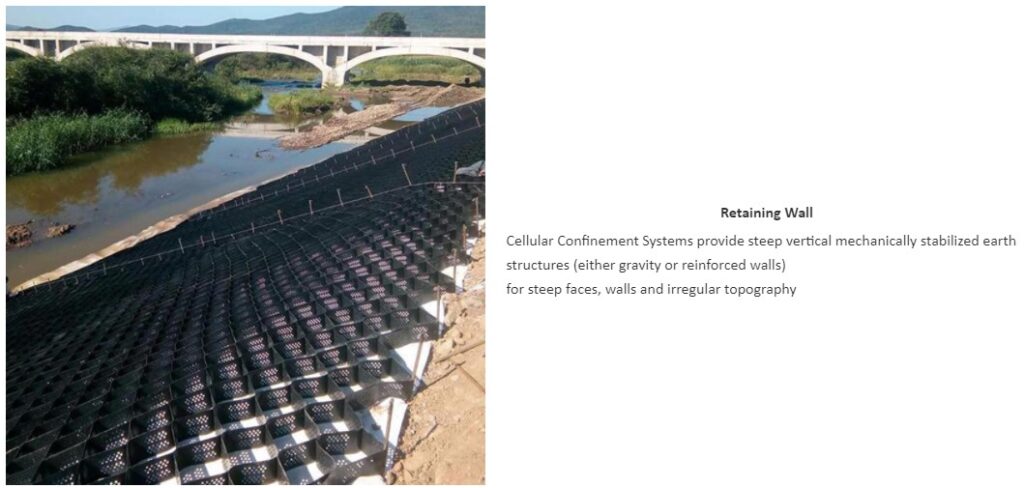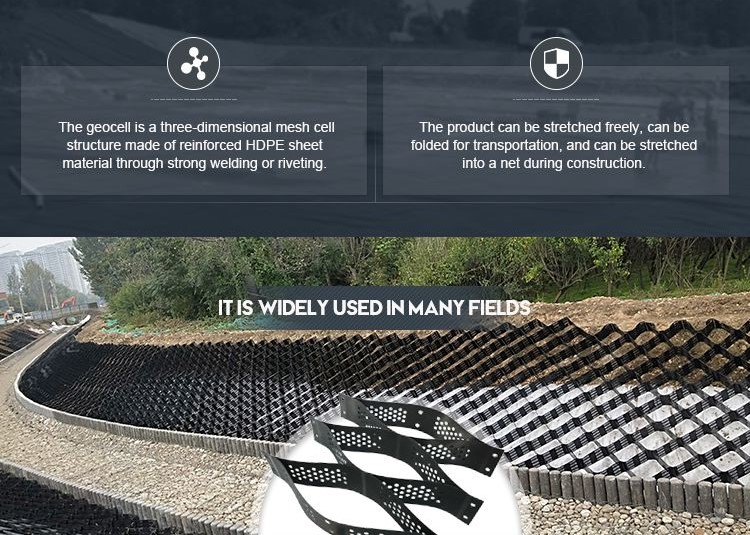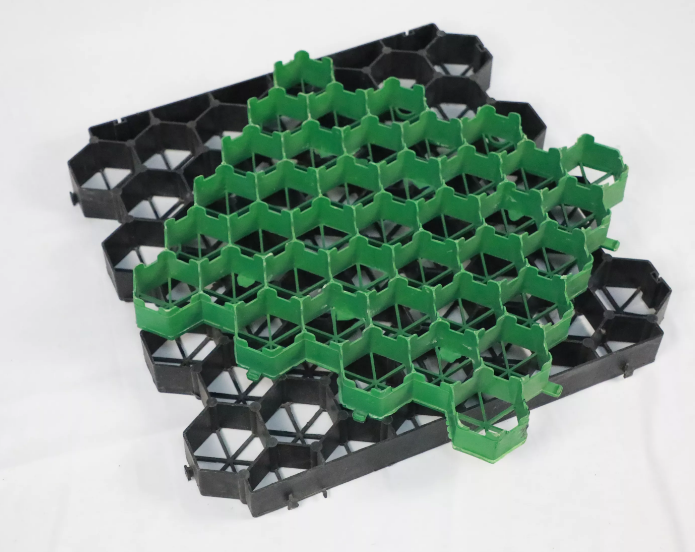Geogrid I believe everyone knows that there will be: steel-plastic geogrid, bidirectional geogrid, glass fiber geogrid, polyester geogrid, unidirectional geogrid, warp-knitted geogrid, plastic geogrid, that today Let me explain to you in detail what is a geogrid, and what is the function of a geogrid?
First of all, what is a geogrid?
Geogrid is made of
- The polymer is extruded into a mesh body,
- Thick strands braided cross-bonded,
- Two sets of strands are lapped up and down to form a drainage groove,
- The two groups of strands are fused at the intersection point to form a flat mesh and made of synthetic resin extrusion
A material with a planar network structure with large holes and a certain rigidity. It is mainly used as a reinforcing material for soil engineering reinforcement and stability. Geogrid has the properties of high tensile strength, anti-rutting and rolling, and long service life. features.

What is the function of the geogrid?
Geogrid is a commonly used auxiliary material for slope protection engineering to improve the stability and safety of ecological engineering. When the slope protection project is stable, it is suitable to use ecological bags directly for protection. Then for slopes with loose soil and load requirements, it is necessary to design and construct When installing, it should be used in conjunction with geogrid. If the slope is steep or vertically high, the geogrid and the ecological bag should be connected with a special engineering buckle. The ecological bag can be used as a retaining wall and backfilled with the geogrid. The strength of the structure is required.
Geogrid construction method
① Ground treatment: First, level and roll the base. The flatness is required to be no more than 15 mm, and the compactness meets the design requirements. Hard protrusions such as crushed stones and block stones are prohibited on the surface.
② Geogrid laying: a. When storing and laying geogrid, avoid exposure to the sun and long-term exposure to avoid functional deterioration. b. Lay perpendicular to the direction of the line, the lap joint meets the requirements of the design drawings, and the joint is firm. The strength of the joint in the direction of force is not lower than the design tensile strength of the material, and its superimposed length is not less than 20cm. c. The quality of the geogrid conforms to the rules of the design drawings. d. Keep the continuity of the construction without distortion, wrinkle, and overlap. Pay attention to tighten the grid to make it bear the force, and use manual tension to make it even, flat, and close to the lower bearing surface, and fix it by inserting nails and other methods. e. For geogrids, the direction of the long holes is consistent with the direction of the cross-section of the line, and the geogrids should be straightened and flattened. Grille ends are handled as designed. f. After the geogrid is paved, fill it in time, and the interval should not exceed 48 hours to prevent it from being exposed to direct sunlight.
③ Filling: After the grid is laid, it should be filled in time. The filling shall be carried out symmetrically according to the principle of “two ends first, then the second”, and it is forbidden to fill the middle part of the embankment first. The filler is not allowed to be unloaded directly on the geogrid, it must be unloaded on the paved soil surface, and the unloading height is not greater than 1m. All vehicles and construction machinery are not allowed to walk directly on the paved geogrid, and are only allowed to travel along the direction of the embankment.
④ Turn over the grid: After the layer fill reaches the predetermined thickness and is rolled to the design density, the grid is rolled back to wrap 2m and tied on the upper layer of geogrid, and manually trimmed and anchored, and 1m outside the rolled end , to protect the grille and avoid man-made damage.
⑤ Complete one layer of geogrid paving according to the above method, and carry out other layers of geogrid paving according to the same method. After the paving of the set grid is completed, the filling of the upper embankment will begin.

The construction of geotechnical composition materials should meet the following rules:
1) The lower bearing layer should be flat. When paving, it should be straightened and smooth, and it should be close to the lower bearing layer without distortion or wrinkling. When paving on a slope, a certain degree of tightness should be maintained.
2) For the laying of geotechnical composition materials, a certain length should be left on each side of the embankment, folded back and wrapped on the compacted filling layer, and the exposed part of the folded back should be covered with soil. &
3) For the connection of geotechnical materials, when lap joints are used, the lap length should be 300-600 mm; when seams are used, the seam width should not be less than 50 mm, and the seam strength should not be lower than the tensile strength of geotechnical materials; When using bonding, the bonding width should not be less than 50mm, and the bonding strength should not be lower than the tensile strength of the geosynthetic material.
4) Measures should be taken during construction to prevent damage to geotechnical composite materials, and repair or replace them in time when damage occurs.
5) The upper and lower joints of the double-layer geotechnical composition materials should be staggered, and the staggered length should be greater than 500mm.
Have you gained anything from the above introduction to geogrid construction? Although we can hand over the construction to the construction master, we also need to know some construction knowledge, so that we can report more problems to the master, so that the master can understand our needs.

